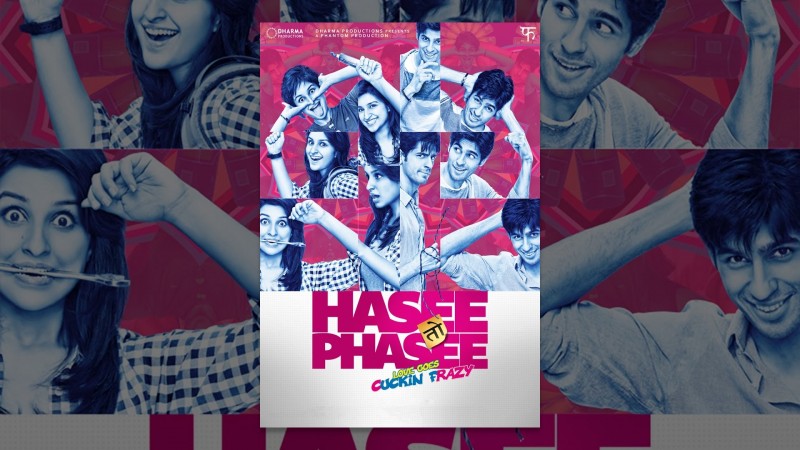
The title of the movie is one of the most important components in drawing in the audience in the creative world of cinema, where there are no restrictions on what can be done. Both producers and filmmakers may find the title selection process to be a challenging and strategic task. The title of the Indian romantic comedy movie, which was originally called "Hasta La Vista," underwent a significant change during the transition from script to screen due to marketing concerns, leading to the now-iconic "Hasee Toh Phasee." The intriguing tale behind this title change is explored in this article, along with the causes, effects, and importance of marketing to the motion picture industry.
The working title for the movie when it was first being conceptualized was "Hasta La Vista." This title, which was based on a well-known line from the Terminator movie series, was undoubtedly intriguing and catchy. Potential viewers were intrigued by the promise of a mix of romance and adventure. The need for a title that not only encapsulated the essence of the story but also connected with the target audience became clear to the filmmakers as the film's production progressed.
Any movie's success is heavily influenced by marketing. It involves bringing attention to the issue, piqueing interest, and ultimately drawing people into theaters. Since it is frequently the first point of contact between the movie and its potential viewers, the title itself is an important part of movie marketing. Therefore, the choice to change "Hasta La Vista" to "Hasee Toh Phasee" as the title was not a casual one; rather, it was a calculated one to increase the film's marketability.
The title change was made for several reasons, with cultural relevance being one of them. The phrase "Hasta La Vista" is well known in American popular culture thanks to Arnold Schwarzenegger's work on the Terminator movies. The movie "Hasee Toh Phasee," in contrast, is a classic Bollywood romantic comedy with a distinctive plot. A title with an Indian flair was required in order to connect with the Indian audience and accurately capture the essence of the movie.
The appeal of the language was another important factor. Although "Hasta La Vista" is in Spanish, "Hasee Toh Phasee" is a comical mash-up of Hindi and English. The catchy name "Hasee Toh Phasee" is also relatable to the Indian audience because it combines humor (the word "Hasee" means "laughter") and a sense of adventure (the word "Phasee" suggests the stages of life and relationships). The target market found the title to be more appealing as a result of the linguistic fusion's distinctive flavor.
The expectations of the audience regarding the genre of a movie are greatly influenced by the titles. It's possible that "Hasta La Vista" gave the audience the impression of an action-packed adventure when in reality it was a romantic comedy. In contrast, "Hasee Toh Phasee" makes it clear from the outset that the movie is comedic, which makes it easier for viewers to anticipate the movie's central themes of romance and humor.
The ease of pronouncing and remembering a movie title is a frequently disregarded but important factor. For the Indian audience, "Hasta La Vista" might have presented pronunciation difficulties, which could have hampered word-of-mouth advertising. It was more likely that "Hasee Toh Phasee," with its straightforwardness and memorable wordplay, would spread naturally through social interactions.
There was probably extensive market research and testing done before the title change was finalized. To determine how the audience would react to both titles, producers and marketing teams may have held focus groups, audience screenings, or surveys. This data-driven strategy would have given insightful information about which title had a bigger effect on potential viewers.
The choice to rename the movie from "Hasta La Vista" to "Hasee Toh Phasee" had a significant effect on how well received and profitable the movie was. It generated excitement and curiosity among the audience and in the industry. The new title successfully communicated the movie's genre and its cultural setting in India, setting up viewer expectations.
Additionally, "Hasee Toh Phasee" developed into a memorable and well-known brand. Promotional efforts were made easier by the title itself, which was used as a talking point and a marketing tool. It drew interest from those seeking a novel romantic comedy experience in addition to the target audience.
A movie's title in the world of cinema is more than just a label; it is a potent marketing and audience engagement tool. The decision to change the title of the movie "Hasta La Vista" to "Hasee Toh Phasee" is an example of the strategic thinking that goes into choosing a title that appeals to viewers, captures the spirit of the movie, and makes the movie more marketable. The filmmakers successfully rebranded their film and made a sizable contribution to its commercial success by carefully weighing factors like cultural relevance, language appeal, genre conformity, ease of pronunciation, and market research. "Hasee Toh Phasee" is proof of the crucial part a title can play in a movie's transition from script to screen, winning over viewers along the way.
From Dream Pair to Lost Opportunity